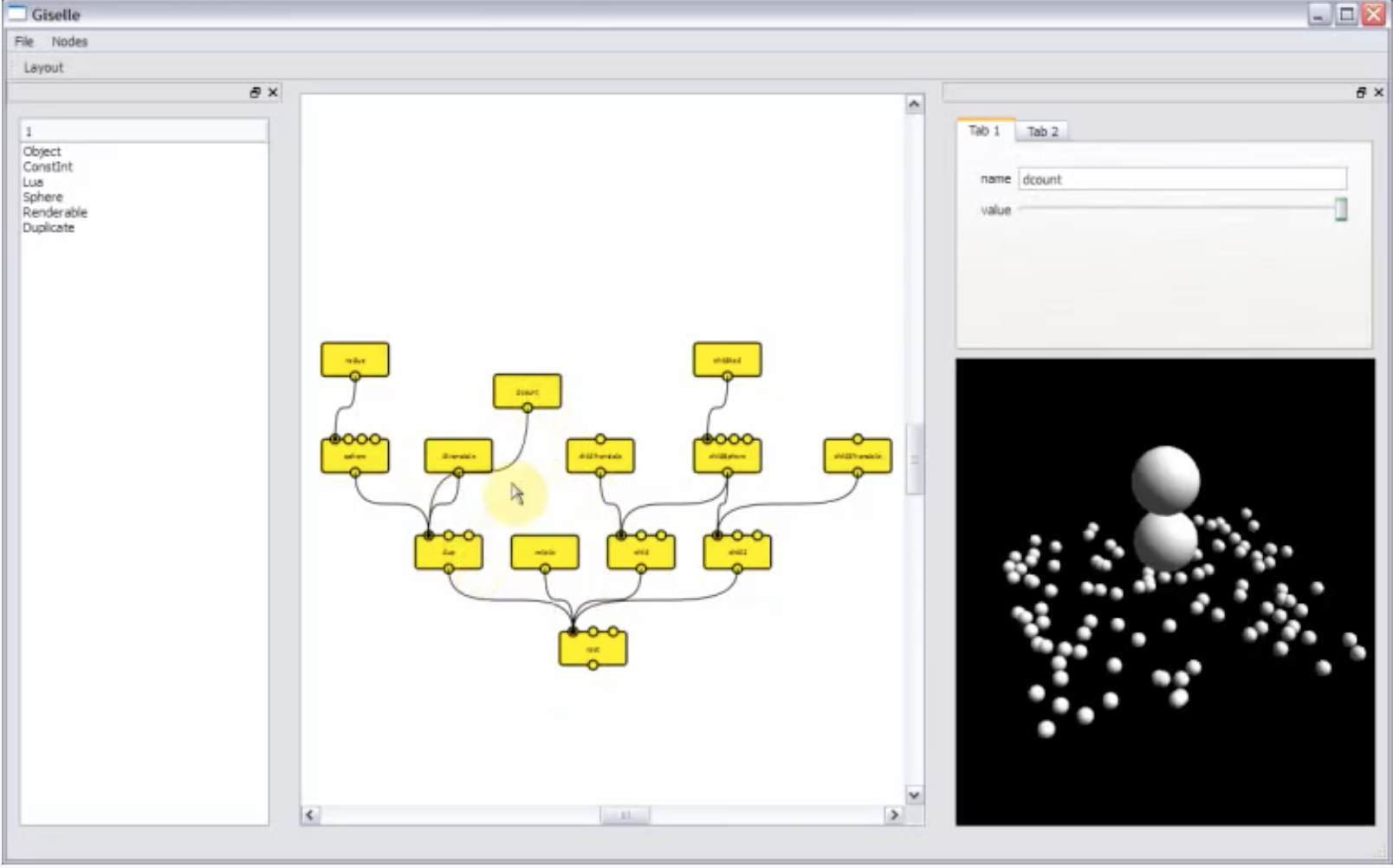Firstly, a bit of background. For as long as I can remember, I’ve been interested in the idea of procedural content generation, creating large amounts of detail from small seeds of information. This fascination was originally driven by my other passion, computer graphics and animation. My first introduction to procedural content generation was through the AL system from Stephen F. May, which I found out was influenced by the menv system developed at Pixar for their animations, a curious link back to my other big project, Aqsis. AL was intriguing to me because it allowed a programmer to achieve the artistic creations I couldn’t achieve with traditional tools. Being able to “describe” what the scene and animation should be like, rather than trying to draw it, was a fascinating concept to me, I can “do” programming. I built the first iteration of Giselle on a similar concept to AL, very heavily focused on traditional text programming using Lua.
My research led me to many fascinating findings, one or two stand out, in particular the work of Eric Bruneton. I was particularly interested in the work he was doing on simulating the Rama spacecraft from A.C. Clarke’s “Rendezvous with Rama”. This resonated with me having just read both Larry Niven’s Ringworld, and Greg Bear’s Eon. Eric’s work led directly to Proland, an open source planetary simulation library. One of the things I specifically noticed about Eric’s work in contrast to much of the procedural generation research at the time, was the conscious decision to include artistic input into the equation, rather than trying to make the whole simulation based on rules and randomness. I learned early on, when working with creative individuals on games and visual effects projects, that creative direction is paramount in anything with an artistic focus. Trying to tweak numbers to make the final result look exactly as required is just untenable for any sizeable project beyond pure research. I recall early on in my work with Renderman, understanding that the reason early versions of Pixar’s venerable rendering system eschewed physically accurate lighting wasn’t only because of the lack of compute power, but also because artists and creative directors so often require the sort of control a totally realistic simulation would at best make challenging. Make that one single object a little brighter, or increase the specular highlights over there, without affecting anything else.
Eventually, partly as a result of researching procedural generation, and partly because I was at the time working in a VFX studio, I landed on Houdini from SideFX. This to me was the epitome of procedural generation. Supremely powerful and flexible, while still accessible by artists and non-programmers. The method used in Houdini for building up unbelievably complex modeling, animation and simulation is incredibly powerful. The more I looked into this approach, the more it fascinated me, and the more confused I became that there weren’t more examples of this approach available, it seems that Houdini has cornered this market. I dug out the original Giselle, and had a look back at the code to see if I could adapt it. The more I thought about the node based, dependency graph approach of Houdini, the more I realised that Giselle wasn’t really a good fit, so started working on a different prototype. This never made the light of day (or Github), but I did release an early video.
And that brings me to now. Looking for a side project to focus on, hone my C++ skills that have been left dormant for a while, and Giselle2 is that project. The original Giselle2 in the video was built on top of Qt, which has fallen out of favour with me in recent times, so that had to go, a number of other decisions taken during the prototyping have been reviewed, and I’ll go into those in future posts on this project, but it’s underway. I’m currently hosting on a private Github project while I get the foundations in place, if there is enough interest I might open the project so others can follow progress, which, by the way, will be slow, I have a very demanding day job, but will endeavour to eek out as much free time to work on this as I can.
I’ll be posting semi-regularly to the Gislle2 category as I work on this.


